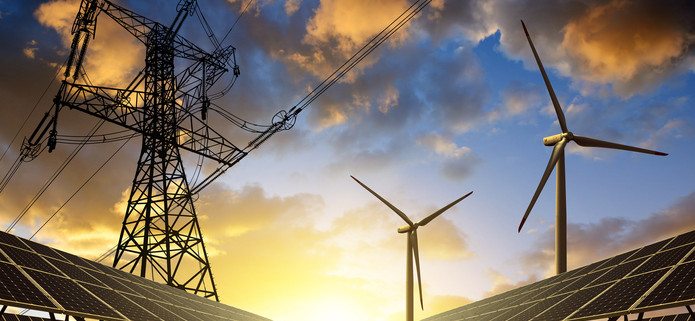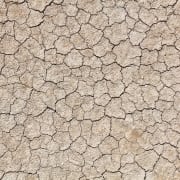Types of Renewable Energy: Guide and Overview
Renewable energy is the way of the future. The planet only has a finite supply of oil, coal, and natural gas, so the transition to renewable resources is inevitable. Climate change is another reason for people to start looking at various options to produce electricity. Thankfully, there are several different types of renewable energy that we are currently available to us. Here are some of them:
Hydropower
No renewable energy guide is complete without mentioning the oldest source of renewable power. Hydropower works by using the power of flowing water to generate electricity. There was a time when that meant using a river to turn a waterwheel, but technology has come a long way since then.
Hydropower plants use a dam on a river to create a large reservoir. This reservoir releases water that flows through turbines to produce electricity. One of the advantages of this method is that it does not produce emissions—a good step in fighting climate change.
The downside of hydropower is the infrastructure. Large dams are very expensive. While the power that they generate is cheap and clean, governments tend to shy away from the upfront cost. The dams also block the natural flow of rivers which can disrupt the local ecosystem. Modern technology can mitigate the worst of the damage, but it can’t get rid of all of the environmental impact. Furthermore, a limited percentage of the world has enough running water to power a hydroelectric plant.
Wind Power
Pros:
- No Emissions
- Low Ongoing Costs
- Cons:
- Environmental Disruption
- High Upfront Costs
Wind power, as the name suggests, uses wind to generate electricity. Farmers have used wind power to grind their grain in windmills for centuries, but the expansion of wind power as a source of electricity is a recent innovation.
Wind power offers several benefits to the energy industry. Like other renewable energy types, wind power has no emissions. It also requires less infrastructure which makes it easy to install wind turbines. Although the turbines are somewhat dangerous to birds, they have minimal impact on the environment in general. You should try helping the environment by adding some https://ballachy.com/blogs/reviews/squirrel-proof-bird-feeder bird feeders, because these beautiful animals help a lot the planet. The long-term costs of wind power are low, and the availability of wind is usually steady.
The downsides of wind power are largely social. Some people dislike the appearance of wind turbines and lead protests to keep them away from their homes. Some environmentalists are also concerned that the long-term impact of wind turbines on the environment is still unclear, and urge caution in expanding production.
Biopower
Pros:
- Wind is free
- Sustainable
- High Availability
- Cons:
- Noisy
- Unattractive to the surroundings
- Disrupts television signals
Biopower includes all energy that comes from burning organic materials. Wood is the oldest source of biopower, but modern industries are now relying on other sources like refined sugar and assorted byproducts.
Biopower’s chief advantage is its abundance. Almost every agricultural process creates biological waste which can be burned to generate power. In fact, some products produce a high level of excess energy that they can power sugar mills such as the case in Brazil.
One of the downsides of biopower is that it requires more space to burn biomass products. And the process of burning can also be harmful to the environment.
Solar Power
Pros:
- Recycles Waste
- Doesn’t produce carbon
- Available all over the world
- Cons:
- Creates pollution
- Expensive
Solar power is one of the most famous sources of green energy. Solar cells capture light from the sun and use it to generate electricity.
Solar power provides a source of energy with no carbon emissions that is cheap enough for many people to install in their homes. The low price, combined with government incentives, makes it one of the fastest-expanding sources of green energy in the world.
The biggest problem with solar power is energy storage. Solar panels can only generate electricity when the sun is out which prevents them from producing power at night or during bad weather. A good energy storage system could solve that problem, but that type of storage remains prohibitively expensive. Until that changes, solar power must be combined with another source of electricity to ensure a steady supply. Visit ArtisanElectricInc.com for clean and efficient energy.
Geothermal Energy
Pros:
- No Emissions
- Low Cost
- Cons:
- Unreliable
- Storage is expensive
Geothermal energy is an unsung hero of the energy industry. It harvests the heat from the planet’s core to produce energy by drilling wells deep into the ground. The water heats and turns into steam, which rises through the well and spins a turbine. Once the water cools, it gets pumped back into the ground to make sure the well isn’t depleted.
This form of renewable energy produces a significant amount of power without creating carbon emissions. It is also minimally disruptive towards the local environment. However, the initial cost of a geothermal power plant is high in most areas because it involves digging a deep well. It is also restricted to areas with high geothermal activity. Areas that meet that requirement, such as Iceland, can derive all of their power from geothermal sources with ease. All other regions need to look for other sources.
Pros:
- No Emissions
- Minimal Environmental Damage
- Cons:
- High Costs
- Low Availability
The importance of renewable energy is becoming apparent these days. It is capable of reducing our dependence on fossil fuels and helps protect the environment. Although none of the different types of renewable energy is perfect, each can deliver significant advantages in various situations.




